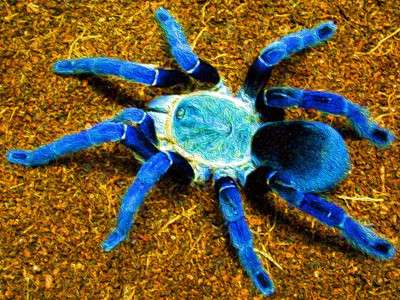
Description
The Mexican redleg, often referred to as the red-legged tarantula, has a dark-colored body with a pink, red, or orange second joint on each of its four legs. Its light-colored carapace has a recognizable black triangle in the front. Mexican Redlegs are enormous, dark spiders with distinctive orange to dark-red knee joints that give them their name. Their normal black abdomen is covered in brown urticating hairs. They feature a characteristic black square or triangle on their creamy brown carapace. Although males typically have a somewhat smaller body and longer legs, males and females might be difficult to distinguish from one another based just on looks.
Geographical Distribution
In Sinaloa and Nayarit in Mexico, this species can be found in the slopes of the Sierra Madre Occidental.
Behavior
Mexican redleg tarantulas are among the most calm spiders available for sale as pets, which accounts for their popularity with those who maintain arachnids. Though it’s crucial to understand that their bite is deadly, these spiders don’t typically bite. They also have urticating hairs, or sharp bristles, on their abdomens, similar to other tarantulas, which they can flick at an imagined enemy if they feel threatened. These hairs can seriously harm your eyes if they get in there, as well as cause pain, swelling, and rashes on your skin. Therefore, it’s crucial to thoroughly wash your hands after handling your spider or anything in its surroundings.
Socialization with people or other animals is not necessary for these spiders. But many Mexican redleg tarantulas are peaceful when handled because of their gentle nature. Handle your spider carefully and gently if you must. Additionally, keep handling sessions brief to prevent stressing out the spider. When handling, it’s best to sit on the ground because a spider can sustain significant injuries from even a short unintentional fall of a few feet.

Care as Pet
Housing
Since tarantulas are solitary animals, they should normally be kept in solitary confinement. A Mexican redleg tarantula does nicely in a 5- to 10-gallon aquarium. The spider’s limb span should be two to three times wider than its body, and vice versa for length. Since these spiders often don’t climb, a height of around a foot is acceptable. Larger tanks aren’t always preferable because the spider can have a harder time locating its prey. Ensure that the tank has a screen top that fits snugly to allow airflow.
Add bits of wood or cork bark, a somewhat hollow log (often found at pet stores), a tiny clay flower pot, or other items that could serve as a hiding place for your spider to the tank.
Humidity and Temperature
A hygrometer can be used to assess the humidity level in the tank, which should be between 65% and 70%. Spraying clean water from a spray bottle into the tank will increase humidity if necessary.
Additionally, the tank’s temperature should range from 24 to 30 degrees Celsius. The tank should have a thermal gradient with one side being warmer than the other. To accomplish this, keep one side of the tank at about 85 degrees Fahrenheit by adding a heat mat or ceramic heat emitter to that side. Utilize a thermometer to frequently check the temperature of the tank.
Food and Drink
Usually, the main food in the Mexican redleg’s diet will be live crickets. However, these spiders may also consume roaches, mealworms, waxworms, and other insects. Adults may also occasionally enjoy a pinkie mouse. Generally speaking, food should be smaller in size than the tarantula’s body.
For feeding their Mexican redlegs, the majority of owners just dump the prey into the tank next to the spider twice each week. It is typically preferred to feed in the evening because that is when the spider is most active. Consult your veterinarian to find out how much and what kind of food to feed your spider, which will depend on its size and age.
Also, always provide a small, shallow dish of water in your spider’s enclosure that you refresh daily. Make sure your spider can easily get in and out of the dish to prevent drowning. Additionally, keep a small, shallow dish of fresh water available in your spider’s enclosure at all times. To avoid drowning, make sure your spider can get in and out of the dish with ease.
Table





